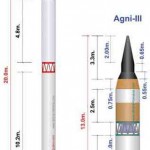Pakistan has had to depend on the US and PRC for its defence needs. Despite long term sanctions the PAF has maintained its F-16 fleet and has recently added some 18 new units.
The 98 recently upgraded MiG-27 and the soon to be up-rated 80 Jaguar DPSA aircraft would be on their way out by 2030. Instead the Su-30MKI, Tejas LCA and later the MMRCA, 126 of which are now on order, will form the backbone of the IAF fighter fleet. The emphasis would be on long-range multi-role capability. In 2030, the IAF can hope to possess some 200 Su-30MKI, 100 Tejas LCA, 60 MiG-29 and about 36-40 Mirage-2000 and if all goes as per plan, some 200 MMRCA fighters that are currently on order. The Russian ‘fifth generation fighter’ deal has been signed and 100 PAK-FA Indo-Russian fighters may also form part of the IAF inventory by 2030.2
Pakistan has had to depend on the US and PRC for its defence needs. Despite long term sanctions the PAF has maintained its F-16 fleet and has recently added some 18 new units. The co-production/development agreement with the PRC for the JF-17 has helped it to order some 250 fighters of this type along with a smaller number (36?) of J-10 (FC-20). Later even the Super-10 an advanced version of the J-10 will most likely join the PAF. Pakistan will also gain from its collaboration with the PRC in building its aeronautical industry and in all probability, by 2030 become capable of manufacturing its own fighters. Of the 383 combat capable aircraft on the PAF inventory only the 46 F-16 and 8 JF-17 are of the third generation.3 All its Mirage III/V variants, the Chinese Q-5 and the F-7 PG/MG would be phased out latest by 2020. It would then have some 200 JF-17, 100+ J-10 and possibly 50+ F-16.
Due to its strained relations with the West, Iran has only 25 MiG-29 fighters; all its US origin offensive platforms like the F-14, F-4, and F-5 face spares/support problems and hence their serviceability in the future is in question. Iran is, however, making up this deficiency by developing a variety of short and long range surface-to-surface missiles. The future of its air arm is thus uncertain unless China comes to its help or in a dramatic shift, its relations with the West and Russia improve. It is noteworthy that Russia has so far not delivered the S-300PMU advanced air defence missile system to Iran under a deal signed many years ago.4
Also read: India as a defence manufacturing hub
The Saudi Air Force currently possesses about 100 Panavia Tornado, 69 Boeing F-15S and 89 MD F-15C/D fighters and a whole host of other air assets including the BAe Hawk trainers and other aircraft of US and European origin. It has recently signed a deal to buy 72+ Eurofighter Typhoon fourth generation fighters. In the future too the Saudis would depend on Western sources for its needs.5
The high cost and restricted availability of the F-22 Raptor and the Joint Strike Fighter (JSF) F-35 make it difficult for these to enter the region by 2030 except possibly with a few of the US allies such as Japan, South Korea, Taiwan and Singapore.
Japan, South Korea and Singapore are also planning to replace their ageing F-4 and F-5 aircraft possibly with the US Boeing F-15 SE. Due to its poor proliferation record North Korea, however, has little option but to live with a nearly obsolete air force unless China, its only friend, comes to its help.
Forecast International has said that in the five years ending 2013, the major players in this field, Lockheed Martin, Boeing, Eurofighter, and Sukhoi will maintain their lead and produce about 40-50 aircraft per year but Chengdu Aircraft of China will also produce 45-50 fighters every year.6 This trend is likely to continue for the next two decades with the Chinese fighters becoming more and more sophisticated and reliable with a sizeable export market. There are reports of Egypt’s interest in locally manufacturing the Sino-Pak jointly produced JF-17.
The high cost and restricted availability of the F-22 Raptor and the Joint Strike Fighter (JSF) F-35 make it difficult for these to enter the region by 2030 except possibly with a few of the US allies such as Japan, South Korea, Taiwan and Singapore. But in the mean time, “under its Next Generation Air Dominance (NGAD) programme, Boeing has unveiled its design concepts for a sixth-generation fighter to replace the US navy’s F/A-18E/F Super Hornet after 2025 and to succeed the US Air Force’s F-22 Raptor two or three years later. These are said to be stealthy, tailless, supercruise-capable and would include optionally manned cockpits.”
One of the defining characteristics of the programme is likely to be its affordability.7 In sum the prohibitively high costs of the modern fighter platforms will compel the countries of the region to look for other options including refurbishing the old types and Unmanned Combat Aerial Vehicle (UCAV). Continuing advances in microminiaturisation and space based assets are likely to enhance the capabilities of the UCAV in the coming decades and relatively lower costs would make them more attractive the air forces of the region.
Airborne Weapon Systems
The quest for accurate delivery of bombs and munitions gained added urgency in the Vietnam War and the Laser Guided Bomb (LGB) soon became the most sought after weapon. The LGB can, however, go awry due to smoke, clouds and other atmospheric obscurities. The LGB’s popularity was the simplicity with which a dumb bomb was converted into a ‘smart’ weapon by adding a kit that included the laser seeker and fins to guide the bomb to the target illuminated by the laser designator carried either by the fighter bomber in ‘autonomous’ mode or by a ‘buddy’ fighter, or sometimes by a Forward Air Controller (FAC) on ground.
India is also reportedly testing its first air-to-air missile the Astra.
In Operation Desert Storm (1990-91), only 229 US aircraft were capable of delivering laser-guided munitions. By 1996 the expanded installation of Low-Altitude Navigation and Targeting Infrared by Night (LANTIRN) pods on F-15Es and block 40 F-16s had increased this capability within the Air Force to approximately 500 platforms. These weapons known as Precision Guided Munitions (PGM) became increasingly popular as they promised reduced collateral damage. It is noteworthy that the IAF used its MiG-27 and Mirage-2000 fighters in ‘buddy’ mode to target camouflaged enemy positions with LGBs in the high mountainous terrain during the 1999 Kargil operations.
In the West the limitations of the LGB resulted in the development of Joint Direct Attack Munitions (JDAM) and later the Joint Standoff Weapon (JSOW) family of weapons that relied on the INS/GPS for guidance and made it possible to deliver these even in bad weather so long as correct geographical position of the target was available. Although countries other than the US have also produced these weapons they remain expensive and are not easily available to developing countries of the region. It is likely that these regional players will try their utmost to locally produce these and other efficient advanced PGMs. A new family of the Sensor Fused Weapons capable of firing small bomblets at specific targets such as the hot engine of tanks and vehicles, are also being used but their efficacy in operations other than conventional wars is questionable since these ‘smart’ weapons cannot differentiate between the engine exhaust heat of an armoured vehicle from that of a school bus.8
A family of anti-tank weapons such as the Milan, TOW, Eryx, FGN-148 Javelin, and AGM-114R Hellfire are once again in demand and are increasingly being used in irregular warfare both from ground and airborne platforms. “Raytheon has delivered more than 30,000 Javelins and about 3,300 have been fired in combat. Production is running at between 1300 and 2000 per year.9
The air-to-air missile has also seen major improvements with the All-Aspect-Missile (AAM) and Beyond Visual Range (BVR) Missile entering service with most air forces of the region. India is also reportedly testing its first air-to-air missile the Astra. It is said to be a BVR with a range of 44 km that may be increased to 80 km in the future. This is another area where self reliance will become even more important for cost and access considerations. These missiles will become even more effective with the introduction of AWACS to the region.
Notes:
- Ibid. Central & south Asia, pp.348
- Air Marshal (Retd) VK Bhatia, “Forecast for 2030”, SP’s Aviation Issue 9, 2009, pp. 40-41.
- Op. Cit. IISS Military Balance, pp. 354-355.
- JDW
- Aviation Week & Space Technology, Aerospace Source Book, January 2009, World Military aircraft Inventory, p. 253. henceforth AWST Source Book.
- Ibid Changing Landscape, pp. 16-20
- Jane’s Defence Weekly, Vol. 47, Issue. 20, p. 5.
- Mets David R, “Airpower and Technology: Smart & Unmanned Weapons”, Praeger Security International, Westport CT., 2009, pp. 128-129.
- Caitlin Harrington, Janes Defence Weekly, Vol. 47, 31 March, 2010, pp. 24-31
Air Defence
The region has seen the induction of more sophisticated surface-to-air missiles (SAM) in the recent past with China receiving a large number of Russian S-300 PMU family with ranges exceeding 150-200 km. These are also effective against enemy missiles. India too has obtained these missiles while continuing to develop its own Akash SAM system.
Click to buy: Asia 2030: The Unfolding Future
With the gradually increasing reach of modern fighters such as the F-16, Mirage-2000, Su-27/30 and even the MiG-29K and the induction of the air-to-air-refuelling tankers and AWACS in China and India and also some other countries, the air defence envelope has expanded with the fighter/interceptor set to engage the enemy at far off ranges. This trend is likely to continue. Ranges may further increase with new BVR missiles entering service with some of these air arms. Operations with these force multipliers are however very complicated with the tanker and the AWACS platforms themselves needing protection.






The Indian Navy has a situation, where she will have three aircraft carriers, in three task forces for different seas and oceans surrounding the Indian Peninsula, and the aircraft carriers mean, the reach will be extended. Where would the task forces be operational? It seems, that south of the Indian Peninsula, between South America and the corresponding coastal latitudinal and longitudinal coastlines of Africa, and in the maritime region near the east of the Straits of Malacca. The aircraft carrier has a mix of aircraft, with anti submarine helicopters, sea patrol maritime anti-ship/sub aircraft, and jet multi-role fighters. The assets that will be represented with the aircraft carriers, like the biggest stealth warships, and submarines that may be nuclear, will be expecting a combat scenario, where merchant shipping will be choked and the sea lanes will be obstructed by naval enemy forces. There will be two or more naval engagements in these maritime regions, and this is a war of attrition, as a consequence.
The U. S. Navy has a fleet, with a similar scenario as the most distant possibility. There is no need for a huge navy, but does the U. S. naval forces portend a war scenario, where their navy is needed in all the oceanic regions, having subsidiary seas as very important combat maritime regions? If we look at the second world war, the seas weren’t as important as certain maritime regional identities, subsidiary to the seas, and the oceans had a large strategic plan.